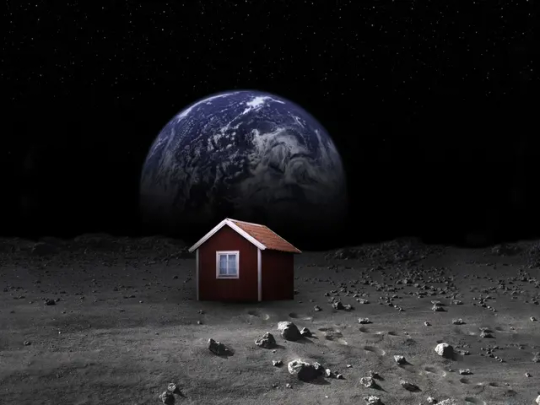Don't wanna be here? Send us removal request.
Text

NASA’s Parker Solar Probe Snaps Closest-Ever Images to Sun !
Gif, made from images taken by Parker Solar Probe’s WISPR instrument during its record-breaking flyby of the Sun on Dec. 25, 2024, shows the solar wind racing out from the Sun’s outer atmosphere, the corona.
NASA/Johns Hopkins APL/Naval Research Lab
#art#cosmos#cosmic#universe#blast#space#photography#nasa#sun#sun gif#cosmos gif#parker solar probe#WISPR#corona#johns hopkins university#close up
109 notes
·
View notes
Text


3I/ATLAS !
The NASA-funded ATLAS (Asteroid Terrestrial-impact Last Alert System) survey telescope in Rio Hurtado, Chile, first reported observations to the Minor Planet Center of comet 3I/ATLAS on July 1, 2025.
Since the first report, observations made before the discovery were gathered from the archives of three different ATLAS telescopes around the world and Caltech’s Zwicky Transient Facility at the Palomar Observatory in San Diego County, California. These “pre-discovery” observations extend back to June 14.
Comet 3I/ATLAS is the third known object from outside our solar system to be discovered. Astronomers have categorized this object as interstellar because of the hyperbolic shape of its orbital path. (It does not follow a closed orbital path about the Sun.) When the orbit of 3I/ATLAS is traced into the past, the comet clearly originates from outside our solar system.
Comet 3I/ATLAS poses no threat to Earth and will remain far away. The closest it will approach our planet is about 1.8 astronomical units (about 170 million miles, or 270 million kilometers). 3I/ATLAS will reach its closest point to the Sun around Oct. 30, 2025, at a distance of about 1.4 au (130 million miles, or 210 million kilometers) — just inside the orbit of Mars.
The interstellar comet’s size and physical properties are being investigated by astronomers around the world. 3I/ATLAS should remain visible to ground-based telescopes through September 2025, after which it will pass too close to the Sun to observe. It will reappear on the other side of the Sun by early December 2025, allowing for renewed observations.
#art#cosmos#cosmic#universe#blast#space#photography#wallpaper#stars#nasa#interstellar#atlas#astronomy#comet#31/ATLAS#asteroid#discovery
23 notes
·
View notes
Text

10 billion light-years away...
Giant Star Seen 150 Days Before it Exploded as a Supernova !
In April of 2023, a massive star exploded in NGC 4388, a spiral galaxy about 57 million light-years away. The Zwicky Transient Facility (ZTF) spotted it, and the supernova is called SN 2023 fyg. SN 2023fyq is a rare type of supernova called a Type Ibn.
They show a lack of hydrogen lines and narrow He I emission lines in their spectra. Astronomers think that these characteristics come from the SN interacting with hydrogen-poor, helium-rich circumstellar material (CSM.)
Astronomers only know of a few of these types of SN, so their progenitors are poorly understood. Prior to its explosion, the ZTF also spotted the precursor activity, providing a window into these mysterious progenitors.
#art#cosmos#cosmic#universe#blast#space#stars#supernovae#NGC 4388#blast from the past#ZTF#supernova#SN#CSM
33 notes
·
View notes
Text

Trifid and Lagoon Nebulae.
This image demonstrates what makes Rubin unique: its combination of an extremely wide field of view and the speed that allows it to take lots of big images in a very short time.
Courtesy: NSF–DOE Vera C. Rubin Observatory
#art#cosmos#cosmic#universe#blast#space#photography#wallpaper#stars#trifid nebula#lagoon nebula#rubin observatory#astro photography
23 notes
·
View notes
Text

Squid Nebula and Flying Bat Nebula (Sh2-129)
#art#cosmos#cosmic#universe#blast#space#photography#stars#squid#nebula#bat#sh2-129#astro photography
40 notes
·
View notes
Text

IC1340 Supernova Remnant in the Cygnus constellation
#art#cosmos#cosmic#universe#blast#space#photography#supernova#cygnus#constellation#IC1340#astro photography
29 notes
·
View notes
Text

NGC 1760,61,63,69,73,76, and Others Nebulae in the LMC
Credit: Astronomyguy101
#art#cosmos#cosmic#universe#blast#space#photography#wallpaper#stars#NGC 1760#NGC61#NGC63#NGC74#nebulae#LMC#NGC76
48 notes
·
View notes
Text

IC 443: a Bow-Shock Cometary Nebula
#art#cosmos#cosmic#universe#blast#space#photography#wallpaper#stars#IC443#nebula#astro photography#comet
308 notes
·
View notes
Text


Pan, Saturn's walnut-shaped moon !
Pan is the innermost named moon of Saturne. It is approximately 35 kilometres across and 23 km wide and orbits within the Encke Gap in Saturn's A Ring.
Pan is a ring shepherd and is responsible for keeping the Encke Gap free of ring particles. It is sometimes described as having the appearance of a walnut, or ravioli.
Credit: Nasa
#art#photography#surreal#cosmos#cosmic#universe#blast#space#nasa#pan#moon#walnut#ravioli#saturne#encke gap#aring
63 notes
·
View notes
Text

The “dirty thunderstorm” shot at Calbuco volcano in April 2015, southern Chile.
Photography by Francisco Negroni
#art#cosmic#blast#photography#volcano#eruption#lighting#thunderstorm#dirty#calbuco#chile#francisco negroni#electrical storm#storm#nature#raw
13 notes
·
View notes
Text

Jupiter !
Credits: NASA
335 notes
·
View notes
Text

Strawberry Moon !
The Strawberry Moon is the full moon that occurs in June. It gets its name from Native American tribes who used this moon to mark the short, sweet strawberry harvest season.
The name, which originated with the Algonquin tribe, signaled that wild strawberries were ripe and ready to be gathered.
The Strawberry Moon will reach its peak illumination on Wednesday, June 11, 2025, at 3:45 a.m. ET.
#art#cosmos#cosmic#universe#blast#space#photography#wallpaper#moon#strawberry#strawberry moon#full moon#june 11#algonquin tribe#american history#native american
50 notes
·
View notes
Text

The "Moonhouse," Mare Frigoris, Moon,
History is about to be made. On June 5 at 09:24 PM CET, a tiny red house — a traditional Swedish cottage — is set to become the first house ever to land on the Moon.
After traveling through space for more than four months aboard the Japanese lunar lander RESILIENCE, the artwork known as The Moonhouse now enters its most critical phase: a soft landing in Mare Frigoris — the Sea of Cold.
This unique fusion of art and technology began with a bold idea. In 1999, Swedish artist Mikael Genberg imagined placing a simple red house on the Moon.
The dimensions are 4.72 inches (12 cm) wide, 3.15 inches (8 cm) deep, and 3.93 inches (10 cm) high. The house is about 3.5 ounces, or 100 grams.
#art#surreal#design#funnyshit#minimal#funny pictures#funny shit#moon#funny#moohouse#cottage#resilience#mare frigoris#red house#mikael genberg#artwork#fun#landing#space#cosmos#cosmic#universe
16 notes
·
View notes
Text

NGC 6888, The Crescent Nebula,
Credit: Roberto Colombari
#art#cosmos#cosmic#universe#blast#space#photography#wallpaper#stars#astro photography#astrophotography#nebula#crescent nebula#NGC 6888#roberto colombari
228 notes
·
View notes
Text

The Rosette Nebula
DeepSkyPix Photography
#art#cosmos#cosmic#universe#blast#space#photography#stars#nebula#rosette#astro photography#astrophotography
298 notes
·
View notes
Text

Orion Nebula !
Courtesy: FlappyGrr
#art#cosmos#cosmic#universe#blast#space#photography#wallpaper#stars#astro photography#astrophotography#orion#nebula
45 notes
·
View notes
Text

Elephant's Trunk Nebula (reprocessed)
Courtesy: Particular Limit
#art#cosmos#cosmic#universe#blast#space#photography#wallpaper#stars#surreal#ghost#elephant#trunk#nebula#elephant's trunk nebula
65 notes
·
View notes